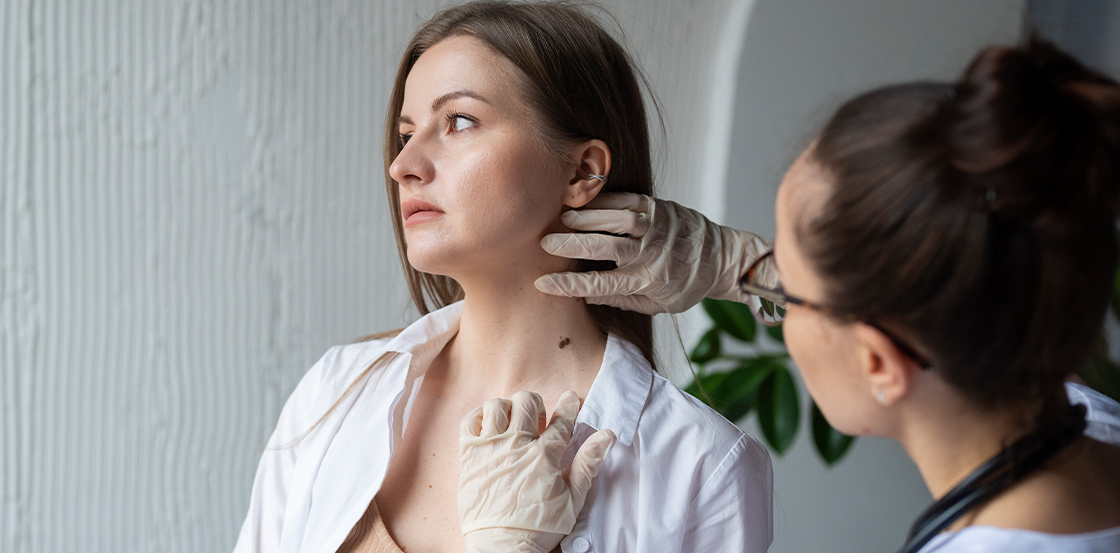Post link copied to clipboard!

Dermoid cysts, also known as mature cystic teratomas, are lesions that can develop in various body parts. They are congenital, non-cancerous growths from the abnormal development of embryonic cells, retaining the potential to form a diverse array of tissues and structures.
These cysts frequently present a complex reality that contradicts patients’ initial expectations.
A dermoid cyst is a sac-like growth that contains normal tissue, developing unexpectedly in or under the skin. The term “dermoid” refers to its skin-like properties, while “cyst” indicates a lump containing various materials, such as fluid, bone, hair, nerves, sweat glands, and even teeth.
It can occur anywhere in the body. Some cause lumps on the skin surface, while others reside deeper inside the body. Dermoid cysts treatment usually does not cause harm and necessitates surgical removal since they do not disappear spontaneously, even though they may resemble tumours initially.
Primarily, dermoid cysts occur on the head and neck. Periorbital dermoid cysts most commonly occur near the outside edge of the eyebrow. Other frequently observed dermoid cysts include ovarian dermoid cysts (on or in the ovary) and spinal dermoid cysts (on the spine).
However, rarer types like peribulbar dermoid cysts (on the surface of the eye), intracranial dermoid cysts (in the brain), nasal sinus dermoid cysts (inside the nose), and orbital dermoid cysts (around the bones of the eye socket) can also occur.
Dermoid cysts are congenital, meaning they are present at birth. They arise when skin layers fail to grow together as they should during fetal development. The sac collects skin cells, tissues, and glands. And it continues to produce fluid, leading to the cyst’s growth.
These cysts are more commonly diagnosed in children under the age group of five years, with approximately seven in ten cases identified in this age group. Further, doctors diagnose around four in ten dermoid cysts at birth.
The primary cause of dermoid cysts is their congenital nature. They form during the early stages of fetal development when skin cells, tissues, and glands collect in a sac instead of merging as expected.
Most people with dermoid cysts do not experience any symptoms. However, as the cysts grow, some individuals may notice specific signs based on the cyst’s location and type:
Healthcare providers can diagnose dermoid cysts in various ways, depending on their location:
Surgical removal is the most effective treatment for dermoid cysts. The type of surgery depends on the specific cyst:
Untreated dermoid cysts can lead to various complications if they grow over time. These complications may include damaging nearby bones, causing infections, injuring the spinal cord or nerves, rupturing the cyst, and inducing ovarian torsion (twisting of the ovaries).
If new symptoms arise or existing symptoms worsen, it is essential to consult a healthcare provider. You should seek immediate medical attention if the cyst becomes inflamed, causes pain, changes colour enlarges significantly, or ruptures.
The most effective treatment for a dermoid cyst is surgical removal.
After surgical removal, dermoid cysts are dubious to return.
Yes. Dermoid cysts on the ovaries may impact fertility. So it’s essential to discuss concerns with a healthcare provider.
Dermoid cysts are usually non-harmful. But if left untreated and allowed to grow, they may lead to complications.